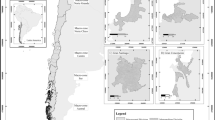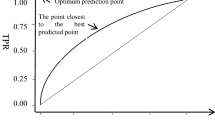Abstract
Marginalization of people in the process of globalization led to increase social vulnerability. This paper addresses peripheralization of social vulnerability in national capital territory. It is based on the analyses of mission convergence data of 1.1 million households across 274 municipal wards of Delhi. In the past, unauthorized colonies have been regularized in Delhi. The total number of Jhughi Jhopri (JJ) clusters in 2011 were 687 and number of Jhuggies were 0.48 million (Delhi Shelter Board, JJ Cluster list, Govt of Delhi, 2011). (Delhi development report (DDR), 2013), reported reduction in poverty to single-digit figures (9.9 %) in 2011–12, from approximately 13 % in 2004–05. Notwithstanding the wide concern over the present official poverty line, which is indeed an under-estimate of the state of vulnerability. To claim that there has certainly been a decline in absolute poverty levels in Delhi, can be critically looked at from the rest of the papers in this volume, which shows growing marginalization and disparities.
Access this chapter
Tax calculation will be finalised at checkout
Purchases are for personal use only
Similar content being viewed by others
Notes
- 1.
Hindu Newspaper (2013). Notification for Regularization of 895 colonies likely next week. March 2, 2013. http://www.thehindu.com/news/cities/Delhi/notification-for-regularisation-of-895-colonies-likely-next-week/article4468680.ece (Accessed 27.08.2013).
- 2.
Census of India (2001). State of literacy (chapter 7), Provisional Totals, Series 1. Office of the Registrar General & Census Commissioner for India, Ministry of Home Affairs, New Delhi.
- 3.
Census of India (1991). Instruction to Enumerators for filling up the Household Schedule and Individual slip. Office of the Registrar General & Census Commissioner for India, Ministry of Home Affairs, New Delhi.
References
Agarwal, S., Satyavada, A., Kaushik, S., & Kumar, R. (2007a). Urbanization, urban poverty and health of urban poor: Status, challenges and the way forward. Demography India, 36(1), 121–134.
Agarwal, S., Srivastava, A., Choudhary, B., & Kaushik, S. (2007b). State of urban health in Delhi, government of India. Nirman Bhawan, New Delhi: Ministry of Health & Family Welfare.
Ahmad, S., & Choi, M. J. (2010). Identifying and measuring dimensions of urban deprivation in Delhi: A town level analysis. Infrastructure systems and services: Next generation infrastructure systems for eco-cities (INFRA). In 2010 Third international conference on IEEE Xplore digital library (pp. 1–5). http://dx.doi.org/, doi:10.1109/INFRA.2010.5679210.
Baud, I. S. A., Pfeffer, K., & Sridharan, N. (2008). Mapping urban poverty for local governance in an Indian mega city: The case of Delhi. Urban Studies, 45(7), 1385–1412.
Beall, J., & Fox, S. (2009). Cities and development. New York: Routledge.
Bhan, G. (2009). This is no longer the city I once knew. Evictions, the urban poor and the right to the city in millennial Delhi. Environment and Urbanization, 21(1), 127–142.
Cannon, T., Twigg, J., & Rowell, J. (2003). Social Vulnerability, sustainable livelihoods and disasters. Conflict and Humanitarian Assistance Department and Sustainable Livelihoods Support Office, London: Report to the Department for International development.
Cavatassi, R., Davis & Lipper (2004). Estimating poverty over time and space: Construction of a time-variant poverty index for Costa Rica ESA working paper no. 04–21, Agricultural and development economics division, the food and agriculture organization of the United Nations.
Census of India. (1991). Instruction to enumerators for filling up the household schedule and individual slip. Ministry of Home Affairs, New Delhi: Office of the Registrar General & Census Commissioner for India.
Census of India. (2001). State of literacy (chapter 7), provisional totals, series 1. Ministry of Home Affairs, New Delhi: Office of the Registrar General & Census Commissioner for India.
Census of India (2011). Provisional population totals (districts/Su-districts) NCT of Delhi. Retrieved December 24, 2013, from http://www.censusindia.gov.in/2011-prov-results/paper2-vol2/data_files/Delhi/Provisional_Rural_Urban.pdf
Census Slum data (2011). Housing stock, amenities & assets in slums—Census 2011. Retrieved October 10, 2013, from http://www.censusindia.gov.in/2011census/hlo/Slum_table/Slum_table.html
Chakravarty, S. R., & Majumdar, A. (2007). Measuring human poverty by population and factor decomposable indices. Indian Economic Journal, 55(1), 67–77.
DDR (2013). Delhi Development Report. http://www.delhi.gov.in/wps/wcm/connect/d889268040f180159184bba7591b5f5e/redDHDR2013.pdf?MOD=AJPERES&lmod=-579976292&CACHEID=d889268040f180159184bba7591b5f5e
Delhi Shelter Board (2011). JJ Cluster list, Govt of Delhi. Retrieved December 13, 2013, from http://delhishelterboard.in
Dev, S. M. (2000). Economic reforms, poverty, income distribution and employment. Economic and Political Weekly, 35, 823–835.
Dubey, A., & Gangopadhyay, S. (1998). Counting the poor: where are poor in India (p. 1). Sarvekshana: Analytical Report, No.
Dubey, A. & Mahadevia, D. (2002). Poverty and Inequality in Indian Metropolises. Indian Journal of Labour Economics, 44(2).
Dupont, V. (2004). Socio-spatial differentiation and residential segregation in Delhi: A question of scale? Geoforum, 35, 157–175.
Dupont, V. (2007). Conflicting stakes and governance in the peripheries of large Indian metropolises—An introduction. Cities, 24(2), 89–94.
Dutta, K. L. (2008). An estimate of poverty reduction between 2004–05 and 2005–06. Economic and Political Weekly, 33(47), 61–67.
Elbers, C., Fujii, T., Pete, F. L., Özler, B., & Yin, W. (2007). Poverty alleviation through geographic targeting: How much does disaggregation help? Journal of Development Economics, 83(1), 198–213.
Gauci, A. (2006). Targeting & Mapping Poverty. Poverty and Social Policy Team, Economic and Social Policy Division: United Nations Economic Commission for Africa.
Gilles, J. L., & Dalecki, M. (1988). Rural well-being and agricultural change in two farming regions. Rural Sociology, 53, 40–55.
Haki, Z., Akyurek & Duzgun, S. (2004). Assessment of social vulnerability using geographic information systems: Pendik, Istanbul case study, Middle East Technical University, Natural and Applied Sciences, Geodetic and Geographic Information Technologies, Ankara, Turkey.
Henninger, N., & Snel, M. (2002). Where are the poor?: Experiences with the development and use of poverty maps. World Resources Institute.
Herold, M., Goldstein, N. C., & Clarke, K. C. (2003). The Spatiotemporal form of urban growth: Measurement, analysis and modeling. Remote Sensing of Environment, 86, 286–302.
Hindu Newspaper (2013). Notification for Regularisation of 895 colonies likely next week. March 2, 2013. Retrieved August 27, 2013, from http://www.thehindu.com/news/cities/Delhi/notification-for-regularisation-of-895-colonies-likely-next-week/article4468680.ece
Human Development Report (2006). Beyond Scarcity, Power, Poverty and the Global Water Crisis. Retrieved May 16, 2013, from http://hdr.undp.org/en/reports/global/hdr2006/
Jha, R. (2000). Growth, inequality and poverty in India: Spatial and temporal characteristics. Economic and Political Weekly, 35(11), 921–928.
Karn, S. K., Shikura, S., & Harada, H. (2003). Living environment and health of urban poor: A study in Mumbai. Economic and Political Weekly, 38(34), .
Krishna, A. (2003). Falling into poverty: The stages of poverty reduction. Economic and Political Weekly, 38(6), 533–542.
Kumar, N., & Aggarwal, S. (2003). Pattern of consumption and poverty in Delhi slums. Economic and Political Weekly, 37(50), .
Kundu, A. (2007). Dynamics of growth and process of degenerated peripheralization in Delhi: An analysis of socio-economic segmentation and differentiation in micro-environment. In P. J. Marcotullio & G. McGranaham (Eds.), Scaling urban environmental challenges: from local to global and back (pp. 156–178). London: Earthscan.
Kundu, A., & Mahadevia, D. (2002). Poverty and vulneralibility in globalizing metropolis Ahmadabad. New Delhi: Manak Publishers.
Kundu, A. (2000). Urban Development. MOST Programme, UNESCO: Infrastructure financing and emerging system of governance in India.
Masika, R, Haan, A., & Baden, S. (1997). Urbanization and urban poverty: A gender analysis, Bridge (Development—Gender) Institute of Development Studies University of Sussex, Brighton.
Moser, C. O. N. (1998). The asset vulnerability framework: Reassessing urban poverty reduction strategies. World Development, 26(1), 1–19.
NSSO. (2009). 64th round report: Some characteristics of urban slums, 2008–09. Government of India: Ministry of Statistics and Programme Implementation.
Punia, M., Joshi, P. K., & Porwal, M. C. (2010). Decision tree classification of land use land cover for Delhi, India using IRS-P6 AWiFS data. Expert Systems with Applications, 38(5), .
Rashed, T., Weeks, J., Couclelis, H., & Herold, M. (2007). An integrative GIS and remote sensing model for place-based urban vulnerability analysis. In V. Mesev (Ed.), The integration of RS and GIS (pp. 199–231). New York: John Wiley and Sons.
Saith, A. (2005). Poverty line versus the poor: Methods versus meaning. Economic and Political Weekly, .
Vashishtha, P.S. (1993). Regional variation in urban poverty in India. Margin, 483–524.
Weng, Q. (2012). Remote sensing of impervious surfaces in the urban areas: Requirements, methods, and trends. Remote Sensing of Environment, 117, 34–49.
Ze´rah, M. H. (1998). How to assess the quality dimension of urban infrastructure. Cities, 15(4), 285–290.
Author information
Authors and Affiliations
Corresponding author
Editor information
Editors and Affiliations
Rights and permissions
Copyright information
© 2017 Springer India
About this chapter
Cite this chapter
Kumari, S., Punia, M. (2017). Social Vulnerability Mapping for Delhi. In: Acharya, S., Sen, S., Punia, M., Reddy, S. (eds) Marginalization in Globalizing Delhi: Issues of Land, Livelihoods and Health. Springer, New Delhi. https://doi.org/10.1007/978-81-322-3583-5_14
Download citation
DOI: https://doi.org/10.1007/978-81-322-3583-5_14
Published:
Publisher Name: Springer, New Delhi
Print ISBN: 978-81-322-3581-1
Online ISBN: 978-81-322-3583-5
eBook Packages: Social SciencesSocial Sciences (R0)




